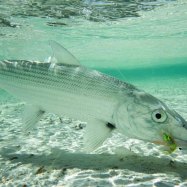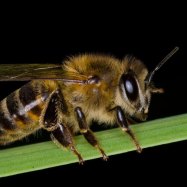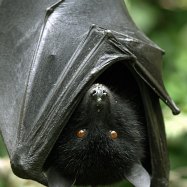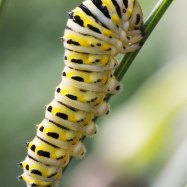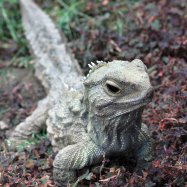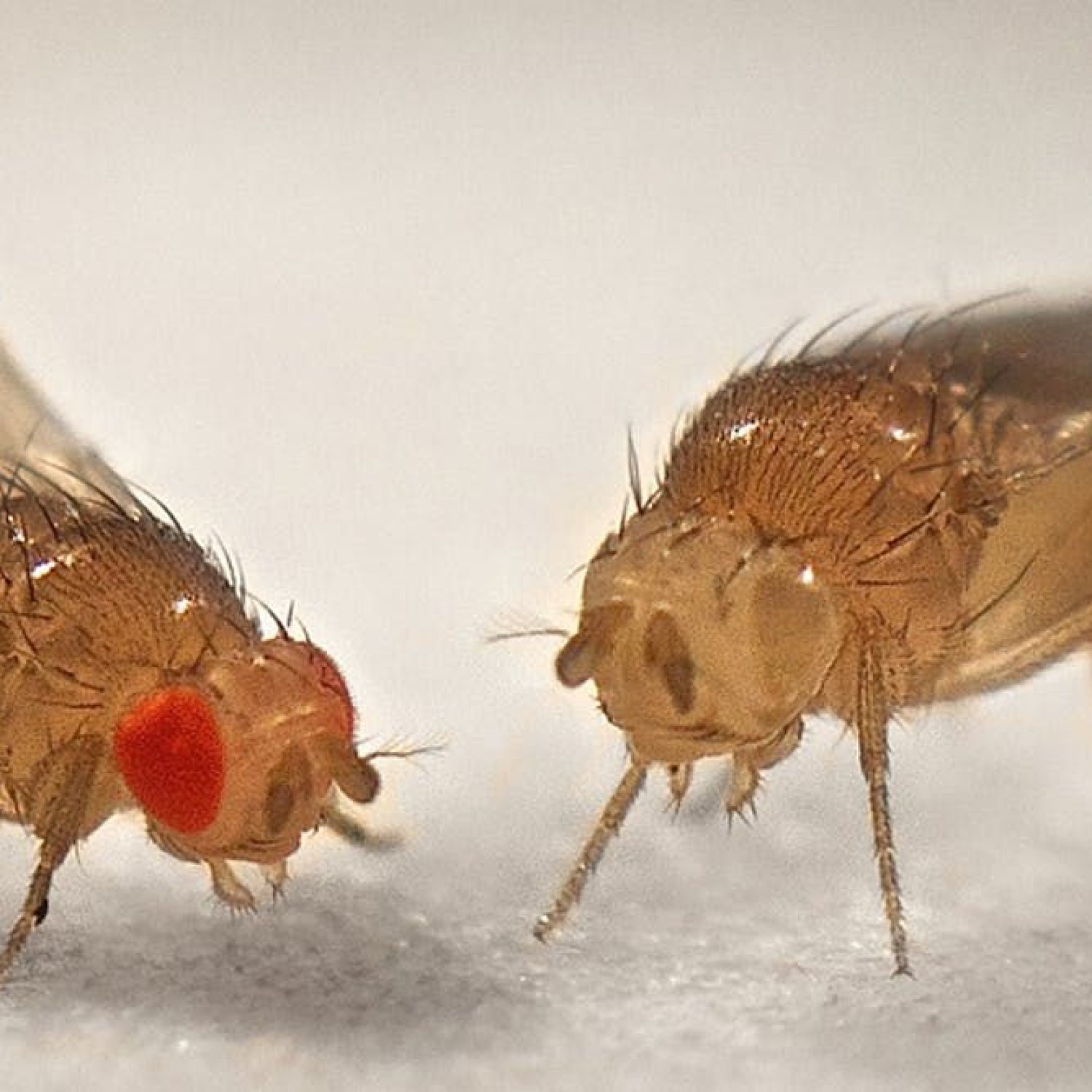
Fruit Fly
Fruit Flies typically measure about 2-4 mm in length.
Did you know that the tiny, but mighty, Fruit Fly belongs to the Drosophilidae family? These urban dwellers with a small, oval-shaped body and transparent wings can be found in forests, fields, and even your backyard fruit bowl! Measuring just 2-4 mm in length, these insects play an important role in pollination and decomposition. #FruitFly #Drosophilidae #NatureFacts
Animal Details Summary:
Common Name: Fruit Fly
Kingdom: Animalia
Habitat: Fruit Fly can be found worldwide, primarily in areas with decaying fruits and vegetables.
The Remarkable World of Fruit Flies: A Tiny Creature with a Big Impact
In the vast world of insects, there is one small but significant creature that has captured the attention of scientists and researchers for centuries: the Fruit Fly. Scientifically known as Drosophila melanogaster, this tiny insect has made a big impact in the field of genetics and is widely studied and used in laboratories all around the world. But what exactly makes this creature so special? Let's dive into the fascinating world of Fruit Flies and discover their unique characteristics, habits, and importance in our ecosystem.About the Fruit Fly
The Fruit Fly, also known as the common fruit fly, is a small fly belonging to the kingdom Animalia, phylum Arthropoda, and class Insecta Fruit Fly. It is a member of the Diptera order, which includes all species of flies and true mosquitoes. Fruit Flies are classified under the Drosophilidae family, and there are over 4,000 species within this family, with Drosophila melanogaster being the most studied and well-known species.Habitat and Distribution
Fruit Flies can be found all around the world, from tropical regions to temperate climates. They thrive in areas with decaying fruits and vegetables, which explains their common presence in kitchens, grocery stores, and fruit markets. While they can be found in various habitats such as urban areas, forests, and agricultural lands, they are most commonly found in areas where decaying organic matter is present.Originally believed to have originated in sub-Saharan Africa, Fruit Flies can now be found worldwide, spreading to different continents through the transport of fruits and vegetables. They have adapted well to different environments and can survive in both natural and man-made settings.
Feeding and Behavior
As the name suggests, Fruit Flies primarily feed on decaying fruits and vegetables, making them an essential part of the ecosystem. They play a crucial role in breaking down organic matter and aiding in the recycling of nutrients Falcon. In addition to fruits and vegetables, they also feed on fungi and fermenting materials. These tiny insects have a rapid reproductive cycle, with females laying hundreds of eggs at a time, leading to a large population in a short period.Fruit Flies are mostly active during the day and rest at night. They are attracted to the smell of ethanol, a byproduct of fermentation, which is why they are often found in wineries and breweries. Their lifespan ranges from 40-50 days, during which they go through various stages, including egg, larva, pupa, and adult.
Appearance and Body Structure
Fruit Flies have a small, oval-shaped body, measuring about 2-4 mm in length. They have two large, compound eyes, which give them excellent vision, five antennae, and six legs. Their body is covered in small hairs, which help them sense movement and vibrations in their surroundings. The most distinctive feature of Fruit Flies is their translucent wings, which allow them to fly effortlessly through the air.Fluttering Through Genetic Research
Fruit Flies may seem like just another pesky insect found in our kitchens, but their significance goes far beyond that. They are one of the most extensively studied organisms in genetics. In the early 20th century, Thomas Hunt Morgan, known as the "father of fruit fly genetics," began using Fruit Flies as a model organism to study heredity. Through his groundbreaking research, Morgan discovered the role of chromosomes in heredity, for which he was awarded the Nobel Prize in Medicine in 1933.But the contribution of Fruit Flies to the field of genetics did not end there. Further studies on these tiny creatures have led to significant discoveries in areas such as gene therapy, cancer, and neurodegenerative diseases. Their short lifespan, ease of breeding, and genetic similarity to humans have made them an invaluable tool for scientists to understand the complexities of genetics and various diseases.
Importance in Agriculture
Aside from their role in genetics, Fruit Flies also play a crucial role in agriculture. As pollinators, they help in the reproduction of various crops, especially those that are not wind-pollinated. Without them, our food production would be affected, leading to devastating consequences for the environment and our food supply.On the other hand, Fruit Flies are also considered agricultural pests as they can damage a wide range of crops. Their preference for ripe and decaying fruits makes them a nuisance to fruit farmers, causing significant financial losses. To control their population and avoid economic losses, farmers use various methods, including pesticides and traps.
Conclusion
While often overlooked and dismissed as pesky insects, Fruit Flies play a significant role in our ecosystem. Their presence and impact are felt in various fields, from genetics and agriculture to food production. These tiny creatures may seem insignificant, but their contributions and unique characteristics make them one of the most widely studied and intriguing organisms in the world.So the next time you see a Fruit Fly buzzing around your kitchen, take a moment to appreciate this remarkable creature and its significant role in our ecosystem. Who knows, they may hold the key to future medical breakthroughs and help us better understand our own genetic makeup.

Fruit Fly
Animal Details Fruit Fly - Scientific Name: Drosophila melanogaster
- Category: Animals F
- Scientific Name: Drosophila melanogaster
- Common Name: Fruit Fly
- Kingdom: Animalia
- Phylum: Arthropoda
- Class: Insecta
- Order: Diptera
- Family: Drosophilidae
- Habitat: Fruit Fly can be found worldwide, primarily in areas with decaying fruits and vegetables.
- Feeding Method: Fruit Flies primarily feed on decaying fruits and vegetables, as well as fungi and fermenting materials.
- Geographical Distribution: Fruit Flies are found worldwide.
- Country of Origin: Fruit Flies are believed to have originated in sub-Saharan Africa.
- Location: Fruit Flies can be found in various habitats, including urban areas, forests, and agricultural lands.
- Animal Coloration: Fruit Flies are usually light brown or tan in color.
- Body Shape: Fruit Flies have a small, oval-shaped body with six legs and transparent wings.
- Length: Fruit Flies typically measure about 2-4 mm in length.
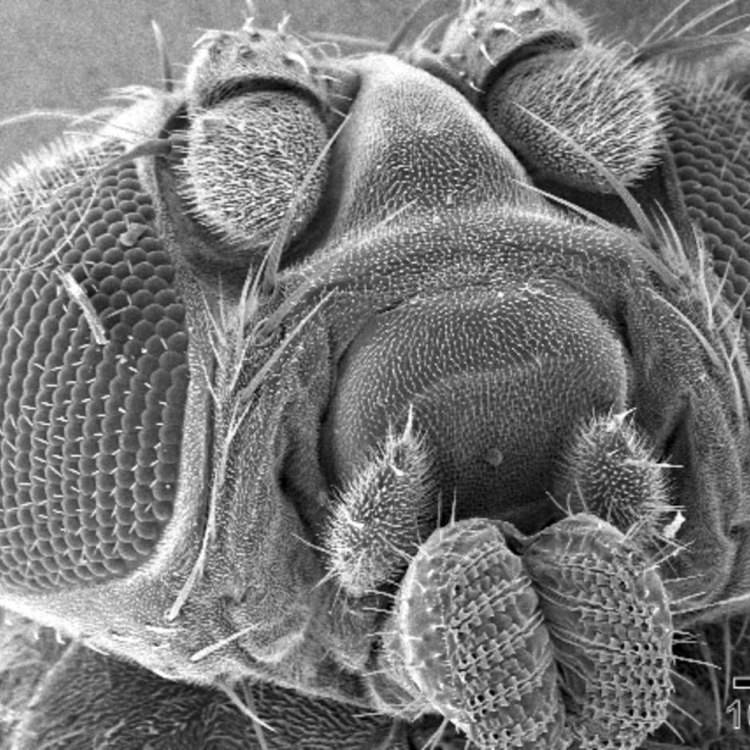
Fruit Fly
- Adult Size: The adult size of Fruit Flies is about 2-4 mm.
- Average Lifespan: The average lifespan of Fruit Flies is around 40-50 days.
- Reproduction: Fruit Flies reproduce through sexual reproduction.
- Reproductive Behavior: Fruit Flies engage in courtship rituals that involve males performing various wing movements and pheromone release to attract females.
- Sound or Call: Fruit Flies do not produce sound or calls.
- Migration Pattern: Fruit Flies do not have a specific migration pattern.
- Social Groups: Fruit Flies do not have social groups.
- Behavior: Fruit Flies are known for their rapid and erratic flight patterns.
- Threats: Fruit Flies are not considered a threat to humans or other animals.
- Conservation Status: Fruit Flies are not listed as a threatened or endangered species.
- Impact on Ecosystem: Fruit Flies play a role in pollination and decomposition of organic matter.
- Human Use: Fruit Flies are widely used in scientific research as model organisms to study genetics, developmental biology, and behavior.
- Distinctive Features: Fruit Flies have red eyes and bristle-like structures on their body.
- Interesting Facts: Fruit Flies have a short lifespan, rapid reproductive cycle, and a relatively simple genome, making them ideal for genetic research.
- Predator: Fruit Flies are preyed upon by various insectivorous animals, including spiders, birds, and reptiles.
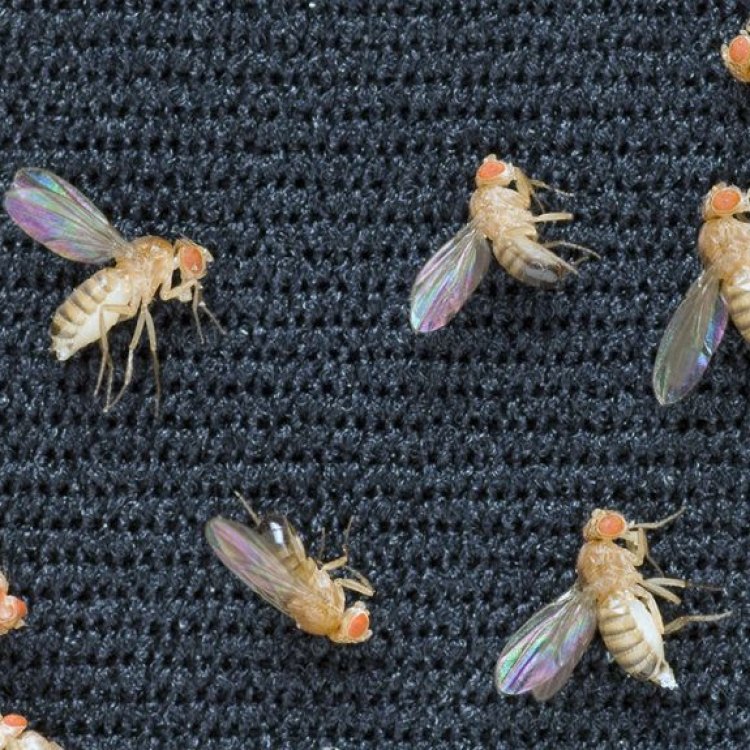
Drosophila melanogaster
The Fascinating World of the Fruit Fly: A Tiny but Mighty Insect
When we think of insects, we often imagine creepy crawlies or buzzing bugs, but there is one tiny insect that has captured the attention of scientists and researchers for decades - the fruit fly. With a size of 2-4 mm and a lifespan of only 40-50 days, the fruit fly may seem insignificant, but it has some unique features that make it a crucial resource in various fields of study.The scientific name for this tiny insect is Drosophila melanogaster, but it is commonly known as the fruit fly due to its tendency to gather around fermenting fruits. Let's take a closer look at these interesting creatures and understand why they have become a favorite subject of scientific research PeaceOfAnimals.Com.
Small Size, Big Impact: The Adult Size of Fruit Flies
Fruit flies are among the smallest insects in the world, and their size is one of their distinctive features. The average adult fruit fly measures between 2-4 mm in length, which is about the size of a sesame seed. Despite their small size, these tiny creatures have a complex body structure, making them an intricate subject of study.A Brief But Active Life: The Average Lifespan of Fruit Flies
The fruit fly may be small, but its lifespan is even shorter. On average, fruit flies live for 40-50 days, making them excellent organisms to study the effects of aging and longevity. Their short lifespan also allows scientists to observe multiple generations in a short period, making them an invaluable resource in genetic research.The Birds and the Bees: Reproduction in Fruit Flies
Like most insects, fruit flies reproduce through sexual reproduction, and their reproductive cycle is quite remarkable. The female fruit fly can lay up to 50 eggs per day and 500 eggs throughout her lifetime. The eggs hatch into larvae, which then go through various stages of development before emerging as adults Fox Terrier. This rapid reproductive cycle is one of the reasons why fruit flies are a popular choice for genetic research, allowing scientists to study numerous generations in a short period.Courtship and Attraction: Reproductive Behavior in Fruit Flies
Fruit flies may be tiny, but they have a complex courtship ritual. Before mating, male fruit flies engage in courtship behaviors to attract females. This includes performing various wing movements and releasing pheromones, a chemical signal, to initiate mating. These behaviors have been a subject of study in understanding the evolution of sexual behavior in organisms.Listen up: Body Music in Fruit Flies
Fruit flies may be a noisy bunch when swarming around a piece of fruit, but they do not produce any sound or call. Unlike other insects, they do not have vocal cords or specialized organs for producing sound. Instead, their communication primarily relies on pheromones and body movements.Winged Wanderers: Migration Patterns in Fruit Flies
Fruit flies do not have a specific migration pattern. They are not migratory insects and usually stay close to their breeding grounds. However, when their food source becomes scarce, they may disperse in search of new territories. This behavior plays a crucial role in pollination, making fruit flies important for maintaining biodiversity in different ecosystems.No Friends, No Foes: Social Groups in Fruit Flies
Fruit flies do not have social groups and prefer to live alone. They do not exhibit any social hierarchy and are often seen as solitary creatures. However, they do interact with each other during mating, and females lay their eggs in the same area as other fruit fly eggs.Spontaneous and Agile: The Behavior of Fruit Flies
If you have ever tried to catch a fruit fly, you will know how fast and erratic they can be. These tiny insects are known for their lightning-fast movements, making them challenging to study. However, their rapid and unpredictable flight patterns have made them fascinating subjects of behavioral research.Not So Harmless After All: Threats to Fruit Flies
Fruit flies are not considered a threat to humans or other animals. They do not transmit any diseases and are not known for causing any harm. However, fruit fly infestations can cause damage to crops and plants, making them a nuisance for farmers and gardeners.Small but Not Endangered: The Conservation Status of Fruit Flies
Fruit flies are not listed as threatened or endangered species. They are widespread and abundant in different habitats worldwide. However, due to habitat destruction and the use of insecticides, some species of fruit flies may face population decline in the future.Ecological Role: The Impact of Fruit Flies in Ecosystems
Fruit flies may be small, but they play a significant role in ecosystems. They are crucial pollinators, helping to transfer pollen from one plant to another, ensuring the survival of many plant species. They also aid in decomposition, breaking down organic matter and returning nutrients to the soil.Tiny but Mighty: Human Use of Fruit Flies
Fruit flies may not be significant in size, but they have had a huge impact on human society. These tiny insects are widely used in scientific research as model organisms to study genetics, developmental biology, and behavior. They have a relatively simple genome, making them ideal for genetic research. Thanks to fruit flies, we have a better understanding of various biological processes and diseases, including cancer, Alzheimer's, and aging.Distinctive Features: The Red-Eyed and Bristled Fruit Flies
Fruit flies may seem plain to the naked eye, but they have some unique features that make them stand out. One of their most distinctive features is their bright red eyes. They also have bristle-like structures, called chaetae, on their body, which help them sense their surroundings and maintain balance.The Little Giants: Interesting Facts about Fruit Flies
Fruit flies may be small in size, but they have left a big impact on the scientific world. These tiny insects have a short lifespan, rapid reproductive cycle, and a relatively simple genome, making them ideal for genetic research. They have played a crucial role in various scientific breakthroughs, including the discovery of genetic inheritance and understanding human diseases.Forever on the Menu: Predators of Fruit Flies
Just like any other insect, fruit flies are preyed upon by various animals. They are a vital food source for insectivorous animals, including spiders, birds, and reptiles. Their rapid reproductive cycle ensures that their population remains stable, despite being preyed upon by many predators.In conclusion, the fruit fly may be one of the tiniest and most abundant insects in the world, but it has left a significant impact on scientific research. From genetics to behavior, these tiny creatures have helped us unravel the mysteries of the natural world. Despite their small size, they have proven to be mighty resources in various fields of study, making them more than just pesky little insects. So next time you see a fruit fly buzzing around, remember the valuable role it plays in our ecosystem and our understanding of the natural world.

The Remarkable World of Fruit Flies: A Tiny Creature with a Big Impact
Disclaimer: The content provided is for informational purposes only. We cannot guarantee the accuracy of the information on this page 100%. All information provided here may change without prior notice.


